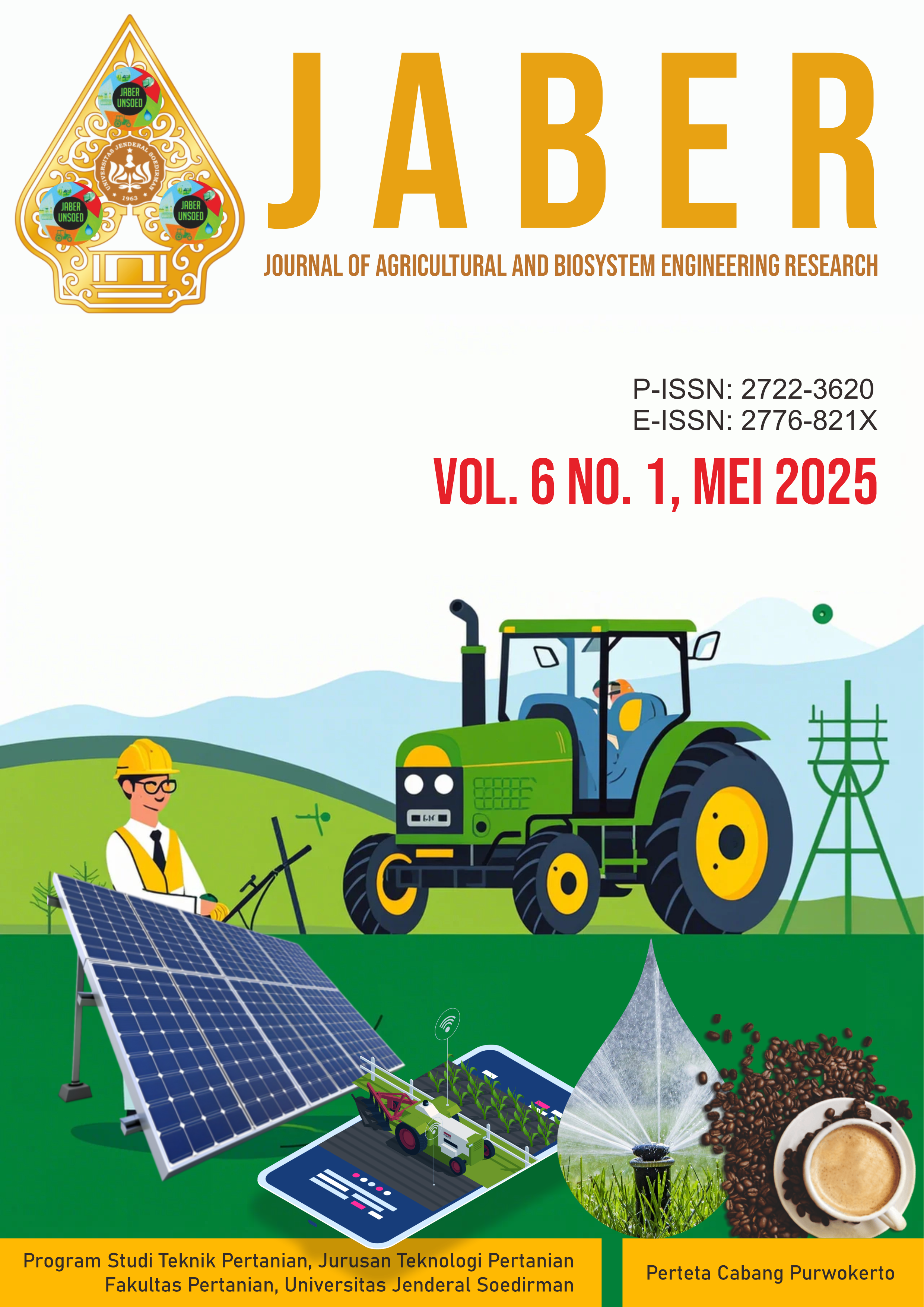PEMANFAATAN DAN POTENSI ENERGI LISTRIK DARI LIMBAH PADAT DAN CAIR PROSES PENGOLAHAN KELAPA SAWIT
Abstract
The palm oil production process yields crude palm oil (CPO) and palm kernel as its main products, along with byproducts such as empty fruit bunches (EFB), fiber, palm kernel shells, and palm oil mill effluent (POME). This study aims to analyze waste utilization and estimate the potential electrical energy that can be generated from these solid and liquid wastes at PT X. The analysis involves observation, measurement, data collection, and calculations based on mass balance principles. At PT X, EFB is incinerated, while fiber and shells are utilized as boiler fuel. POME is treated in open lagoons and used as liquid fertilizer for company-owned plantations. Based on daily operational data and calorific values, the estimated potential energy is 18,174,559.55 MJ from EFB, 7,538,070.26 MJ from palm kernel shells, and 2,125,525.40 MJ from biogas. With an operational time of 720 hours per month, PT X has the potential to generate 2.63 MW of electricity. The findings highlight the significant energy potential of palm oil waste. Therefore, further development of waste processing technologies is essential to maximize energy recovery, support internal energy needs, and potentially supply electricity to surrounding areas.
References
Ali, K., Ahmad, H., Khan, N., & Jury, S. (2014). Future of Abies pindrow in Swat district, Northern Pakistan. Journal of Forestry Research, 24, 631–642.
Ali, S., Jusoh, M. L. C., & Tan, W. S. (2014). Renewable energy from palm oil mill waste: Potential of anaerobic digestion technology. Renewable and Sustainable Energy Reviews, 26, 521–531. https://doi.org/10.1016/j.rser.2013.06.008
Badan Pusat Statistik. (2024). Produksi minyak kelapa sawit menurut jenis perkebunan 2022–2023. https://www.bps.go.id
Chin, M. J., Poh, P. E., Tey, B. T., Chan, E. S., & Chin, K. L. (2013). Biogas from palm oil mill effluent (POME): Opportunities and challenges from Malaysia’s perspective. Renewable and Sustainable Energy Reviews, 26, 717–726. https://doi.org/10.1016/j.rser.2013.06.008
Harris, S. A., & Syafruddin, M. (2013). Studi pemanfaatan limbah padat perkebunan kelapa sawit pada PLTU 6 MW di Bangka Belitung. Jurnal Teknik POMITS, 2(1). https://jurnal.its.ac.id/index.php/teknik/article/view/354
Hassan, M. A., Shirai, Y., Kusnan, M., & Noor, M. Z. H. (2004). The production of polyhydroxyalkanoates from anaerobically treated palm oil mill effluent. Biotechnology Letters, 26(19), 1579–1583. https://doi.org/10.1023/B:BILE.0000044454.99407.29
Kementerian Pertanian Republik Indonesia. (2016). Statistik perkebunan Indonesia: Kelapa sawit 2015–2017. Direktorat Jenderal Perkebunan.
Lam, M. K., & Lee, K. T. (2011). Renewable and sustainable bioenergies production from palm oil mill effluent (POME): Win–win strategies toward better environmental protection. Biotechnology Advances, 29(1), 124–141. https://doi.org/10.1016/j.biotechadv.2010.10.001
Ma, A. N. (2000). Environment management in the palm oil industry. Palm Oil Developments, 30, 1–10.
Moran, M. J., & Shapiro, H. N. (2011). Fundamentals of engineering thermodynamics (7th ed.). John Wiley & Sons.
Nasution, D., Napitupulu, R. A., & Lubis, E. (2018). Utilization of palm oil mill effluent (POME) for biogas production: A case study in North Sumatra. IOP Conference Series: Earth and Environmental Science, 126(1), 012125. https://doi.org/10.1088/1755-1315/126/1/012125
Pahan, I. (2006). Panduan lengkap kelapa sawit: Manajemen agribisnis dari hulu hingga hilir. Penebar Swadaya.
Pleanjai, S., Gheewala, S. H., & Garivait, S. (2004). Environmental evaluation of biodiesel production from palm oil in Thailand. Journal of Cleaner Production, 17(Suppl. 1), S50–S56.
Prasertsan, S. (1996). Biomass residues from palm oil mills in Thailand: An overview. Biomass and Bioenergy, 11(5), 387–395.
Rahayu, A., Fauzi, A., Santosa, B., & Rahman, F. (2015). Konversi POME menjadi biogas. Winrock International.
Sa’id, E. (1996). Komposisi dan karakteristik limbah padat industri kelapa sawit. Jurnal Teknologi Lingkungan, 1(2), 56–62.
Shuit, S., Tan, K., Lee, K., & Kamaruddin, A. (2009). Oil palm biomass as a sustainable energy source. Journal of Malaysia Energy, 20, 567–571.
Sukimin. (2007). Pendayagunaan kelebihan fiber dan cangkang untuk meminimalkan penggunaan bahan bakar minyak. Winata Media.
Surya, R., Fauzi, H., & Nugroho, H. (2021). Evaluation of electricity generation potential from palm oil mill effluent (POME) based on methane emission reduction. Journal of Renewable Energy and Environment, 8(3), 45–52.
Vijaya, S., Ma, A. N., Choo, Y. M., & Nik Meriam, N. S. (2008). Life cycle inventory of the production of crude palm oil – A gate to gate case study of 12 palm oil mills. Journal of Oil Palm Research, 20, 484–494.
Wu, T. Y., Mohammad, A. W., Jahim, J. M., & Anuar, N. (2010). Pollution control technologies for the treatment of palm oil mill effluent (POME) through end-of-pipe processes. Journal of Environmental Management, 91(7), 1467–1490. https://doi.org/10.1016/j.jenvman.2010.02.008
Yokoyama. (2008). The Asian biomass handbook. The Japan Institute of Energy.
Yuliansyah, Y., Syamsiro, M., & Saptoadi, H. (2019). Characteristics and combustion behavior of palm kernel shell and palm empty fruit bunch. Waste and Biomass Valorization, 10(8), 2301–2310. https://doi.org/10.1007/s12649-018-0251-0






